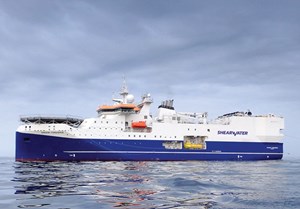What's new in exploration
A great deal of exuberant proclamations is made today about evil money, and oil and gas causing all sorts of situations on the planet, thus creating concern among our young. It is true that money and exploration are related. It takes one to conduct the other. However, the physical existence of oil or natural gas will not change, no matter what opinion or belief is being expressed. How, when and where we look for hydrocarbon can change by who is most vocal in expressing viewpoints. You cannot move more than 1 meter before encountering the benefit of oil and gas.
News: SEG 2019 convention. Not a record attendance (about 5,100), and by necessity, not a total focus on oil and gas exploration, meaning papers on enviro, civil engineering, mining, grav/mag for monitoring, and education. The curious walked the exhibits, but “service deals” seemed absent. A plethora of Chinese lookers and service companies were present. China has the need and money, and has been trending geoscience for years. No news there. China has exhibited in its own hall at OTC for some time. Notice that NAPE advertises that they expect 12,000! NAPE is the center of action for producers and want-to-be producers.
Trending: A great deal of interest exists for AI in data management. The burden of interpreting and remembering terabytes of information by a mere human is daunting, but possible. AI makes sense today, because talent has been retiring or has been fired routinely since 1994. Replacements are missing. Management has no interest in full artificial general intelligence [AGI] for themselves, but shareholders may be looking into it.
Most explorers today are investors. They are watching the unloading of shale properties by small producers and mid-caps. Many are looking to buy large conventional reserves with flippable upside. I talked with one private group that says they are only looking for reserves, purchase price about $500 million, and fungible within three years. How realistic is that?
What’s up with BP and Hilcorp? These two are billion-dollar companies that define exploration, based on how they compete for oil. BP, as an equity firm, must foremost concern itself with renewing reserves, i.e., shareholder value, as reported annually in SEC 10K assets. Jeff and Brad Hildebrand are not. Hilcorp is private, and is concerned about revenue, BE, and liquid cash flow. Where else can the brothers “buy” such enormous reserves today as in Alaska? They do not have 100+ years [BP~ circa 1909] to build a super-major.
Look at the book values of Range Resources and Southwestern to see that billions can quickly disappear when the “shareholder book” is focused on shale. Even Exxon believes in “savior” land swaps. They are selling off major assets in the GOM and North Sea to play THE dominant role in offshore, Guyana, conventional.
Geophysical service still exists, but not by 1998 standards. When Schlumberger bought Western Geophysical—with Western once the largest seismic company on earth—no one predicted that Western would now exist as merely one former employee watching over an aging data library. No boats, no vibrators, no crews, no new Western Geo anything, unless it has been rebranded from Blue. RIP, as in Gulf Oil. The great BP has less than one handful of experts, worldwide, in charge of seismic data acquisition. They are not alone among oil companies. Who can translate geophysics jargon up the line to the budget makers and x/y locators?
However, in spite of onshore shale and not much exploration interest, this past month, a lot of marine seismic was awarded around the world. Shearwater GeoServices has been awarded a new Isometrix seismic acquisition project for Lundin and Spirit Energy Norway in the Norwegian sector of the Barents Sea. The marine acquisition surveys are being carried out by the Amazon Conqueror (Fig. 1), starting in Q3, and cover approximately 180 km2 at license PL965. The project for Spirit Energy covers 130 km2 and is at license block PL962.
“…we have redesigned the source configuration down to a very small point source of only 1 m by 3 m. Combined with wide tow and four of the small focused sources, we believe we will obtain a super-high-resolution image with almost zero offsets, as well as give us accurate amplitude versus offset measurements for reservoir property prediction,” commented Per Eivind Dhelie, senior geophysicist at Lundin, in a Shearwater company press release. I look forward to a data demo.
PS: According to Britannica, the fossil record of the end of the Cretaceous varies worldwide. The best of the youngest age determination was from dinosaur fossil[s] of the triceratops, lasting over about a 1,000,000-year period. Guess he was tougher than the others that asteroid day. (https://www.britannica.com/science/Cretaceous-Period/Correlation). Since Britannica uses cool words like ammonites, bentonites foraminiferas and ostracods, I believe them, as did most GOM micro-paleontologists, as does radiometric data, dared to be published today.

- Applying ultra-deep LWD resistivity technology successfully in a SAGD operation (May 2019)
- Adoption of wireless intelligent completions advances (May 2019)
- Majors double down as takeaway crunch eases (April 2019)
- What’s new in well logging and formation evaluation (April 2019)
- Qualification of a 20,000-psi subsea BOP: A collaborative approach (February 2019)
- ConocoPhillips’ Greg Leveille sees rapid trajectory of technical advancement continuing (February 2019)



